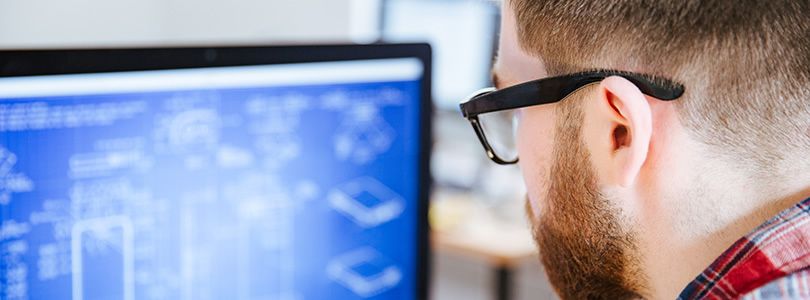Content
Examination and Grant

Examination procedure
In the examination procedure, the DPMA patent examiners make sure that your invention fulfils the following criteria:
- novelty
- inventive step
- industrial applicability
In addition, the invention must be of technical character which is disclosed in a way that allows it to be carried out.
Preliminary examination of the application
By filing the application documents and paying the application fee, you secure the date relevant for the priority of your application.
We will then perform a preliminary examination of your application. The documents will be examined for compliance with formal requirements. We will also check the application for obvious bars to patentability. In addition, we will classify the invention according to the technical field using the International Patent Classification (IPC), an internationally recognised, very detailed classification scheme.
Request for examination
The most important links concerning patent applications
- Search for the state of the art
- Documents: forms and information leaflets
- Costs: everything about fees fees
- Software: e-filing of patent applications
In order to actually obtain a patent, you must file a request for examination and pay the examination fee of 350 euros. Only then will the office carry out substantive examination of your application required for granting a patent.
You have seven years from the filing date to file the examination request. From the third year after filing, annual renewal fees must be paid to maintain your application in force.
You can file a fee-based search request concerning your application pursuant to Section 43 of the Patent Act (Patentgesetz) before filing a request for substantive examination. In that case, protectability of your invention filed will be assessed and explained in a detailed search report containing the documents which might be of relevance for assessing patentability of your invention.
Publication of the application
Your application will be kept secret for 18 months before being published. A notice concerning the first publication of the application (Offenlegungsschrift) will appear in the DPMAregister database. This first publication will be available there from the first publication date.
This enables the public to obtain information on the state of the art. The 18-month secrecy period intends to give the inventors time to further pursue the application or withdraw it before the first publication. The first publication will be issued whether or not you have filed an examination request.
Office actions

If you have filed a request for examination of your application, a patent examiner will determine the state of the art relevant for your invention and examine whether a patent can be granted against this background.
If the patent examiner finds that your invention is new, involves an inventive step, is disclosed in a way that allows it to be carried out and is susceptible of industrial application, and if your application complies with all other formal requirements, the examiner will issue a patent.
If your invention does not meet the requirements or if your application has other deficiencies, this will be communicated to you by office action.
You then have the opportunity to respond within in a time limit fixed in the office action and to correct the deficiencies. Please note that amendments may not go beyond the scope of the original disclosure, that is, the description of your invention submitted on the date of filing.
Grant
If the result of the examination is positive, a patent will be granted. Just like the first publication of the application, a notice of grant will be published in the relevant part of the Patent Gazette (Patentblatt) and will be searchable in the DEPATISnet and DPMAregister databases. The exclusive right of use and the right to prevent others from using the invention come into effect with the publication of the grant in the Patent Gazette (Patentblatt). A granted patent is in force for a maximum of 20 years, counted from the day following the application.
In order to maintain patent protection, you must pay annual renewal fees for each patent (or each application). They become due with the beginning of the third year and each following year and must be paid without invitation.
However, it is possible that your granted patent is challenged by third parties – either by opposition or by revocation action. For more information, please go to the section “Opposition and Revocation”.
Supplementary protection certificates
If a patent was granted for an active ingredient/substance or a combination of active ingredients/substances of a medicinal or a plant protection product, it is, under certain circumstances, possible to have the term of protection extended by a supplementary protection certificate by up to five years and for a further period of up to six months in case of recognised studies on medicinal products for paediatric use ("paediatric extensions").
The application for a certificate must be filed within six months from the authorisation to place the relevant medicinal or plant protection product on the market in the Federal Republic of Germany. If a basic patent had not yet been granted when the authorisation was issued, the request must be received by the DPMA within six months from the grant of the basic patent. If a supplementary protection certificate is granted, it takes effect at the end of the maximum term of protection of the basic patent (20 years).
Request for the grant of a supplementary protection certificate (in German)
Picture 1: iStock.com/DeanDrobot, Picture 2: iStock.com/NicoElNino
Last updated: 10 December 2025

Not only protecting innovations
Social Media